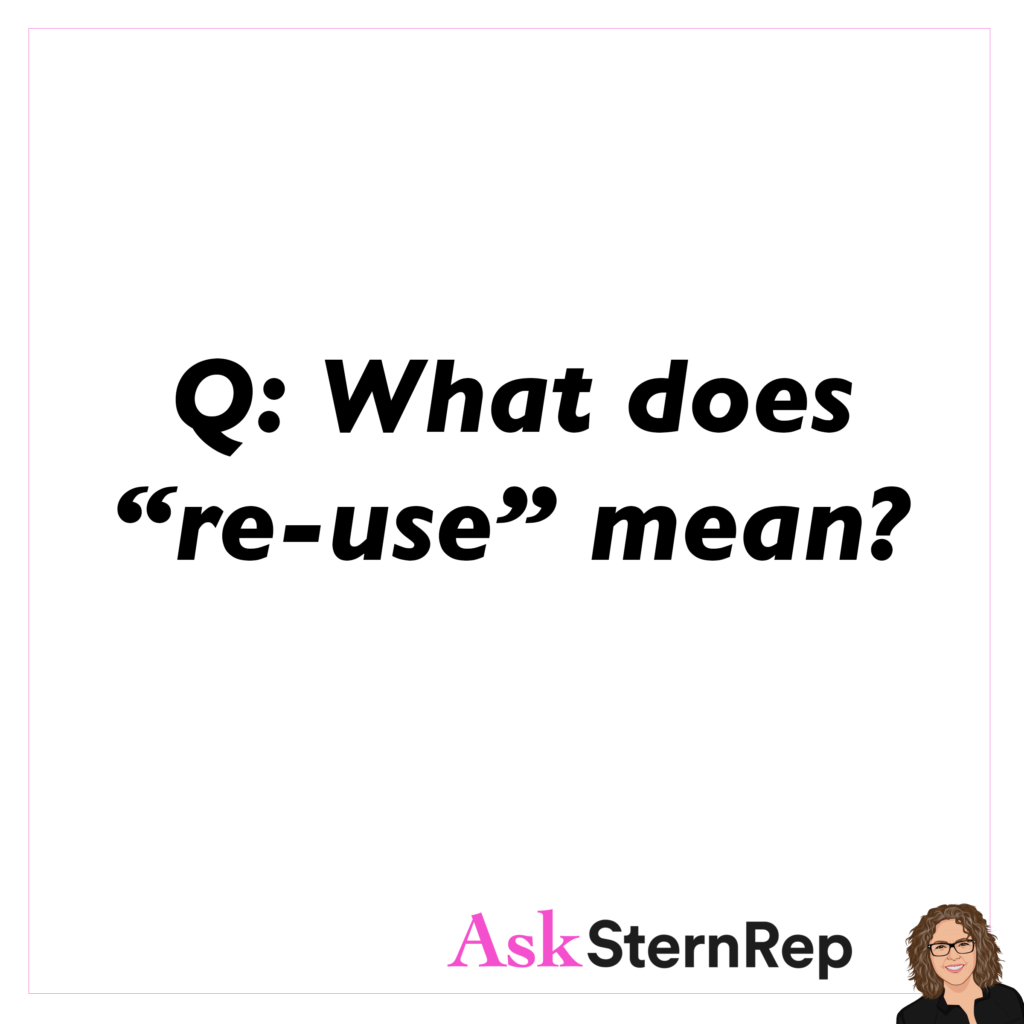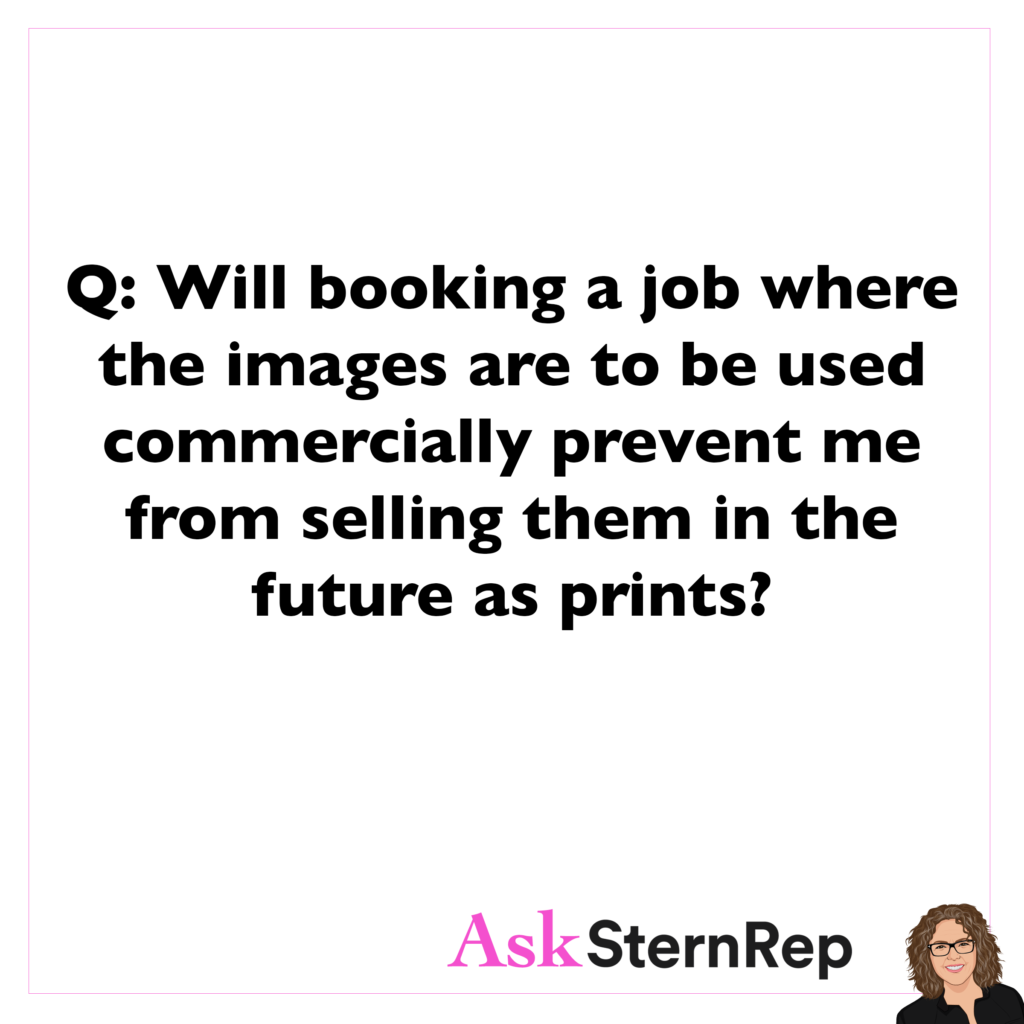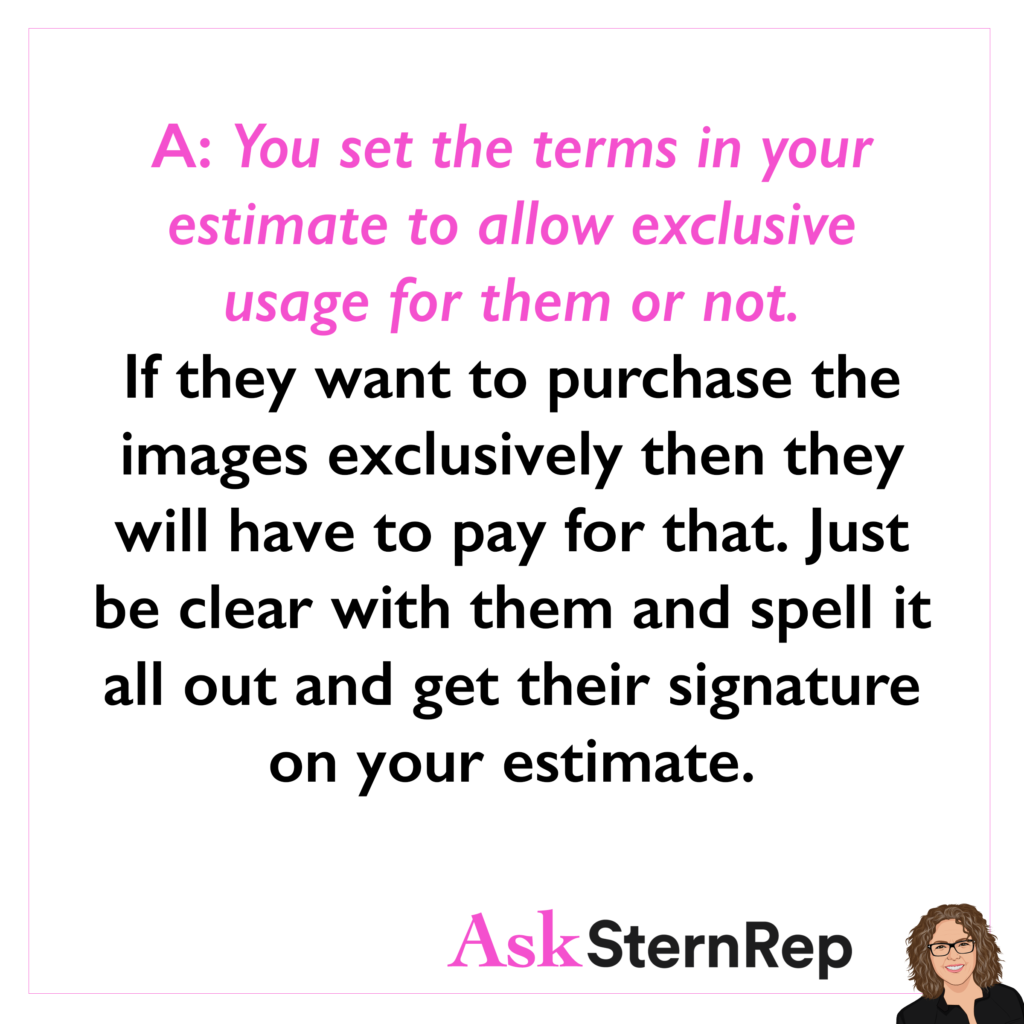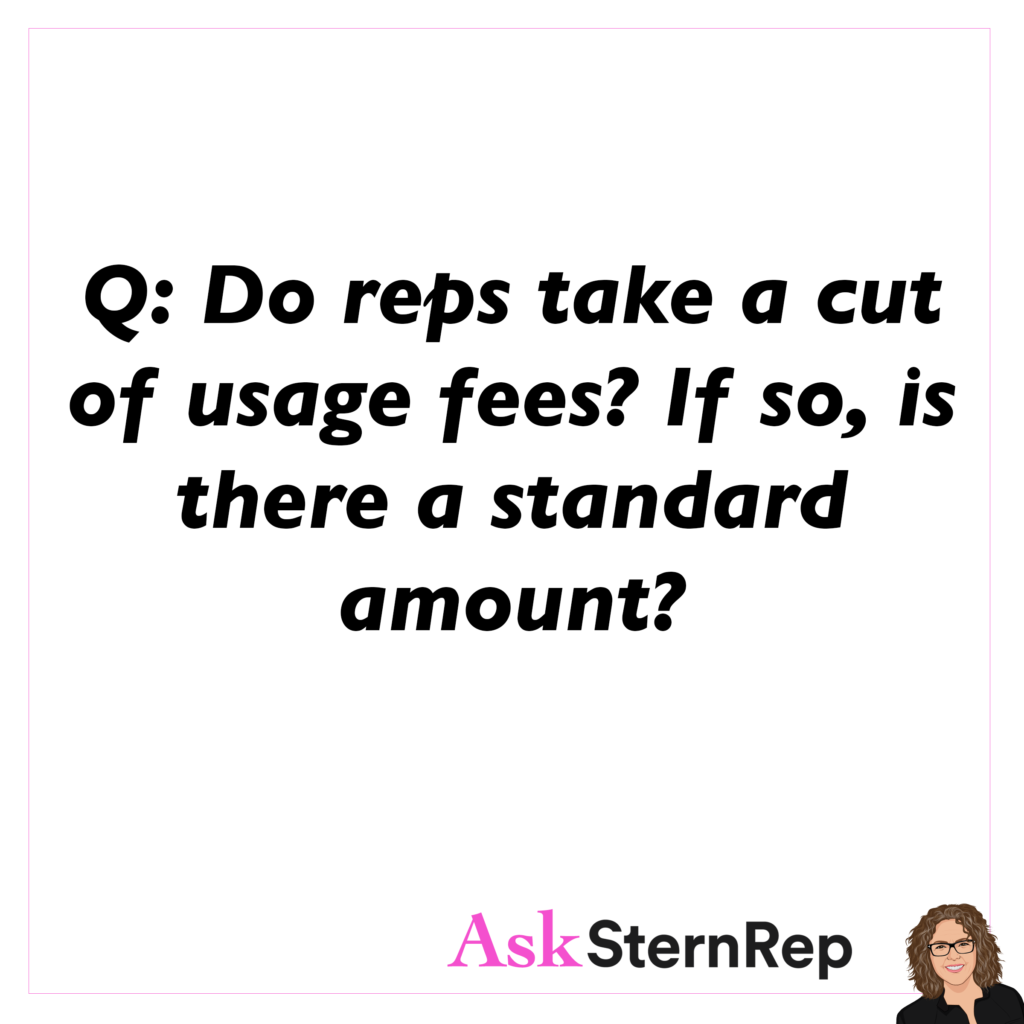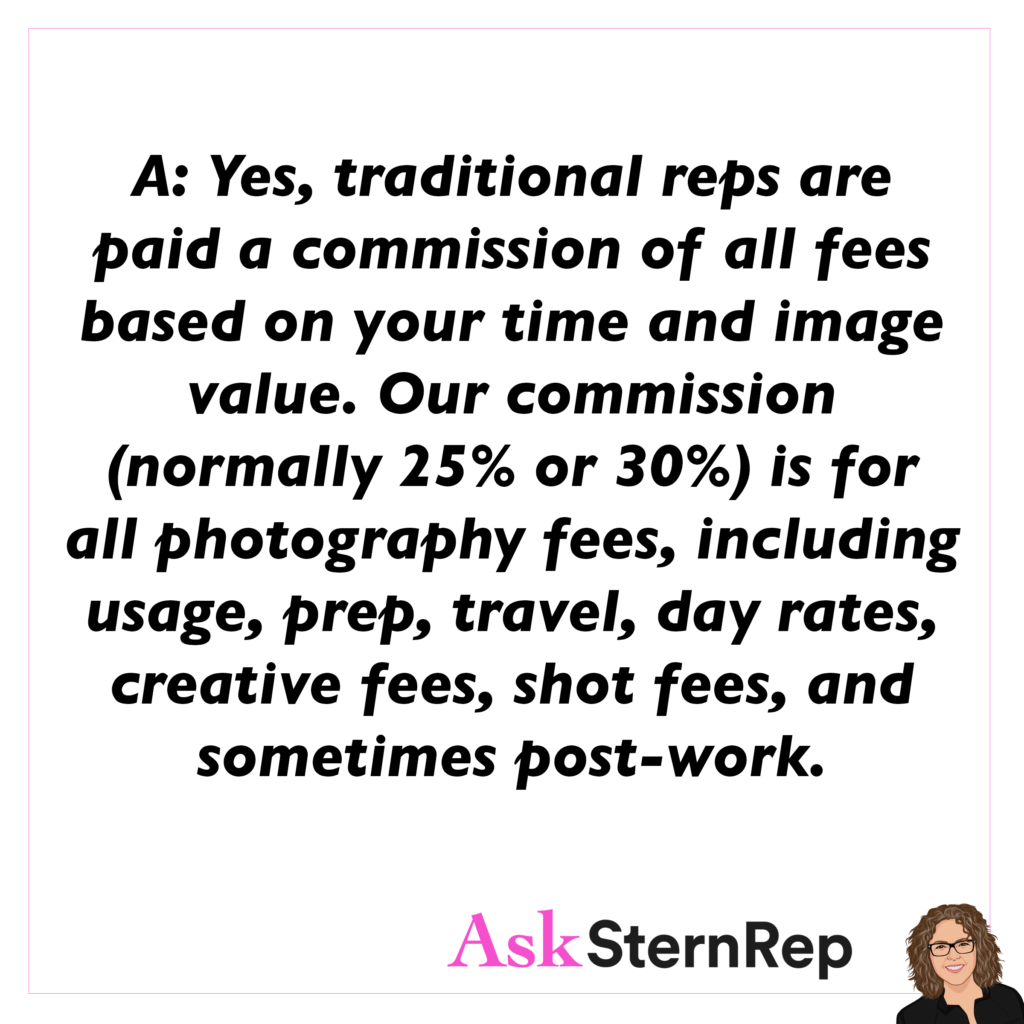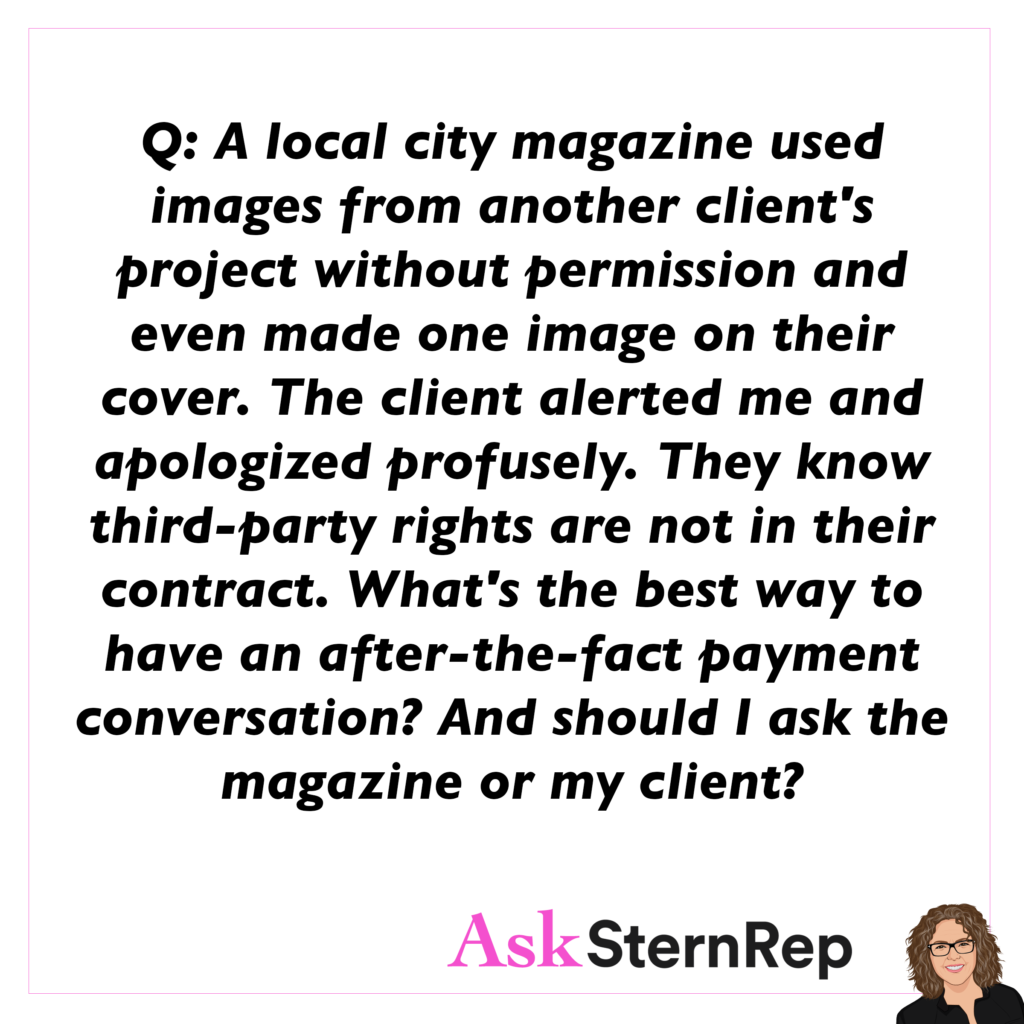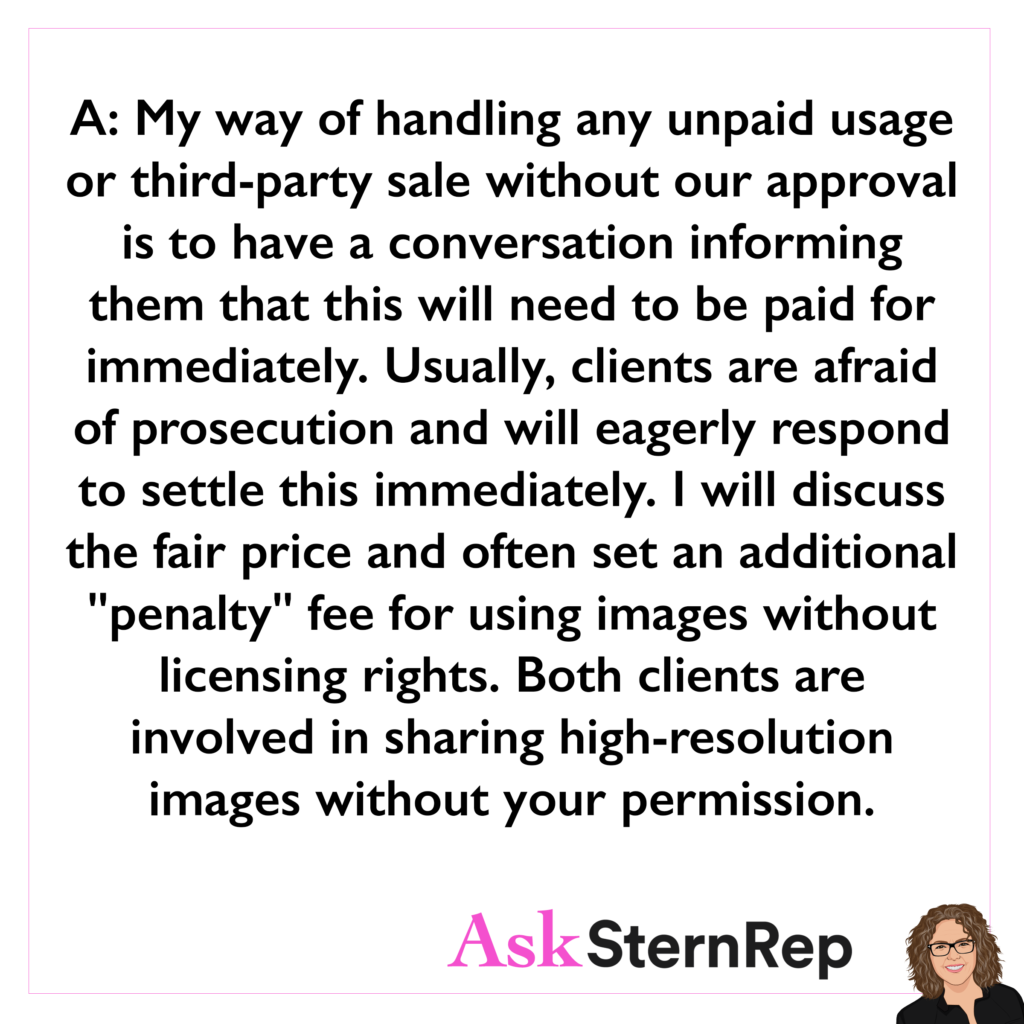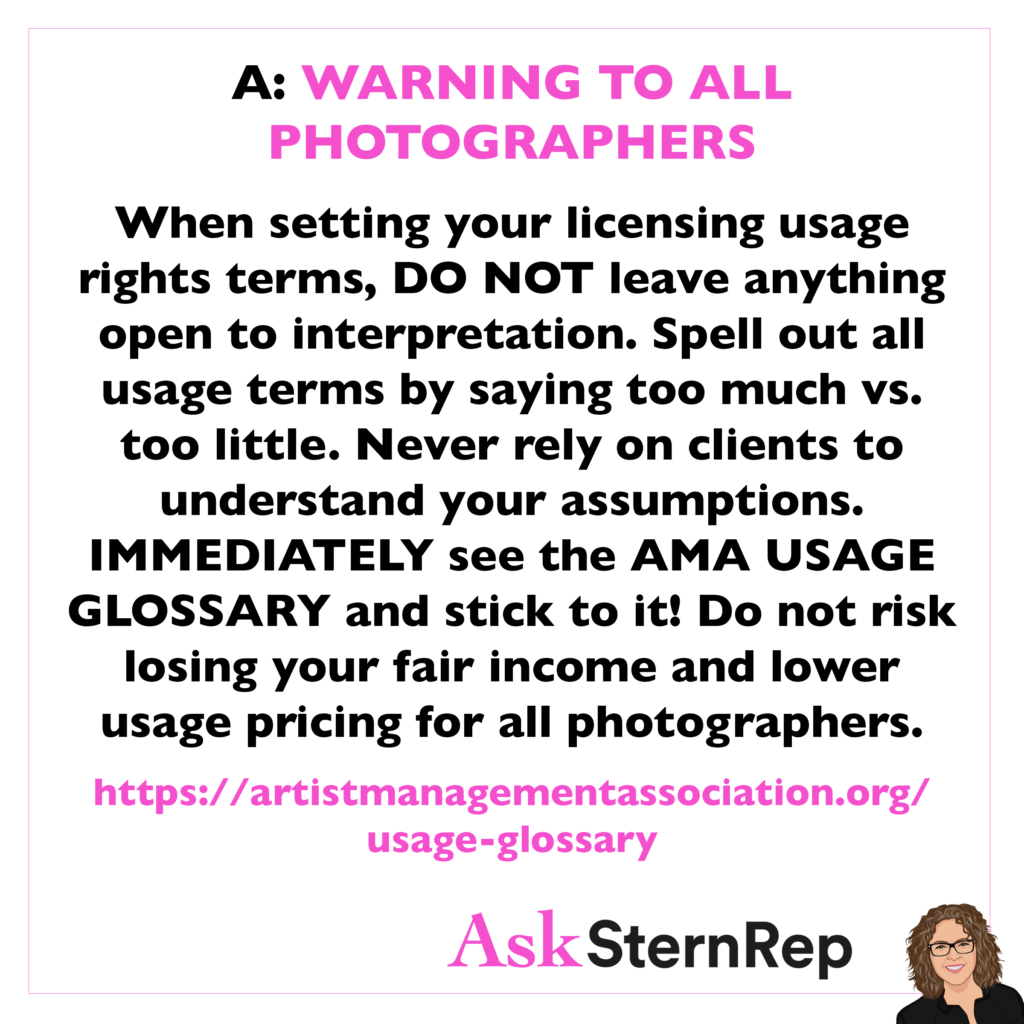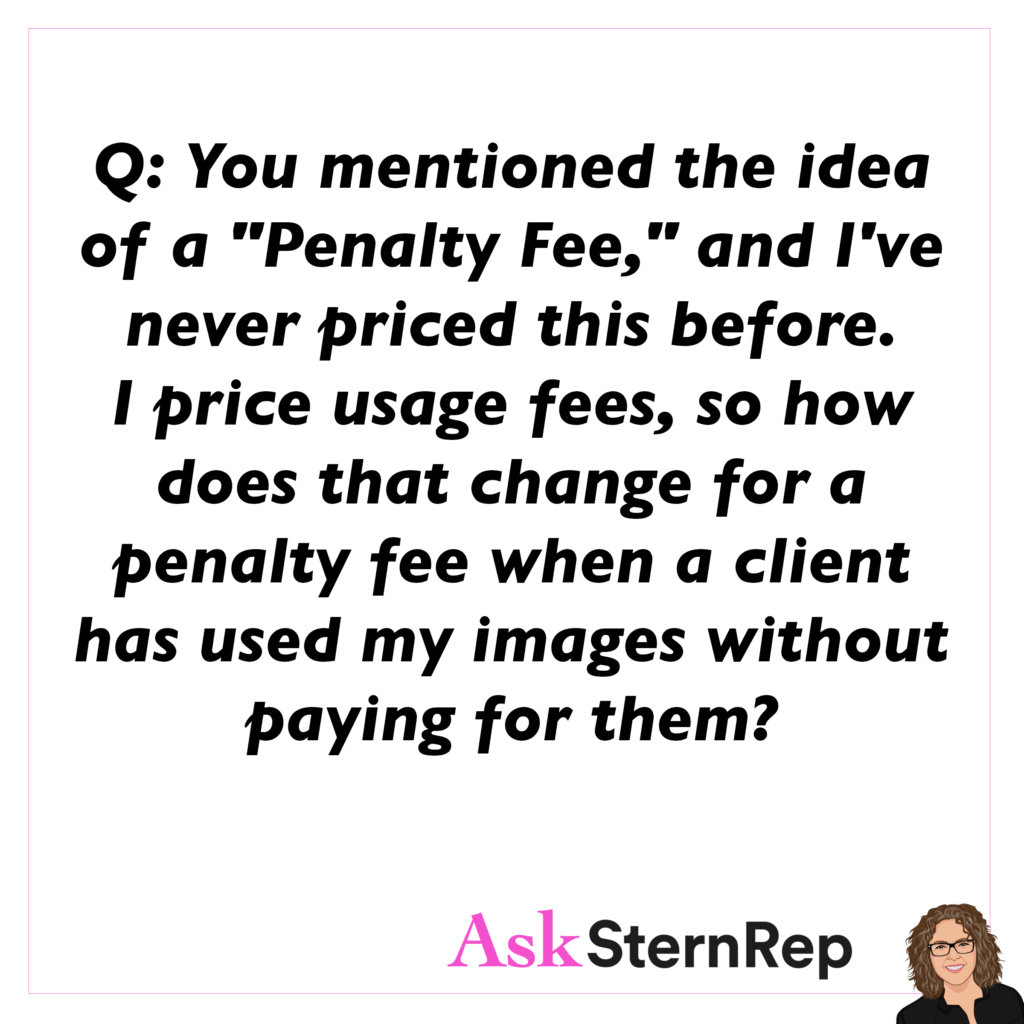
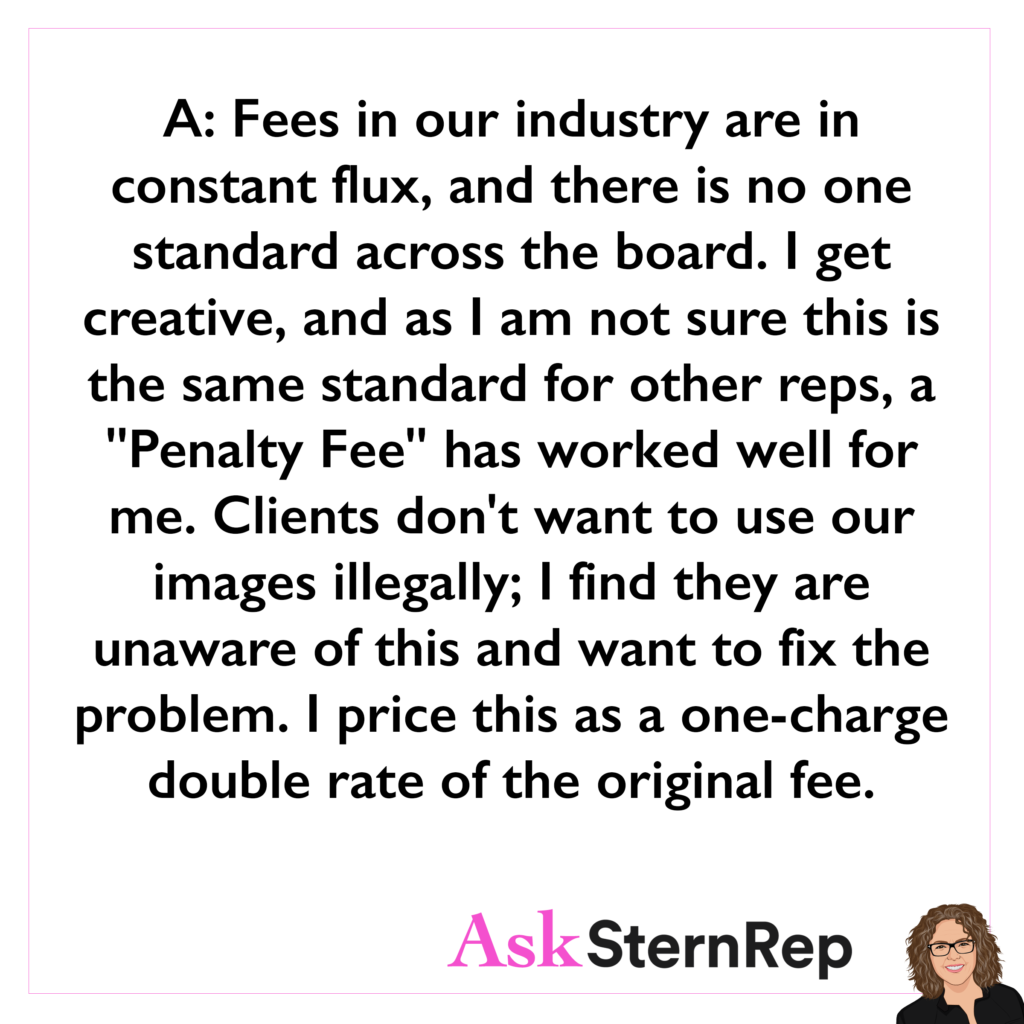
Q:
You mentioned the idea of a “Penalty Fee,” and I’ve never priced this before. I price usage fees, so how does that change for a penalty fee when a client has used my images without paying for them?
A:
Fees in our industry are in constant flux, and there is no one standard across the board. I get creative, and as I am not sure this is the same standard for other reps, a “Penalty Fee” has worked well for me. Clients don’t want to use our images illegally; I find they are unaware of this and want to fix the problem. I price this as a one-charge double rate of the original fee.

